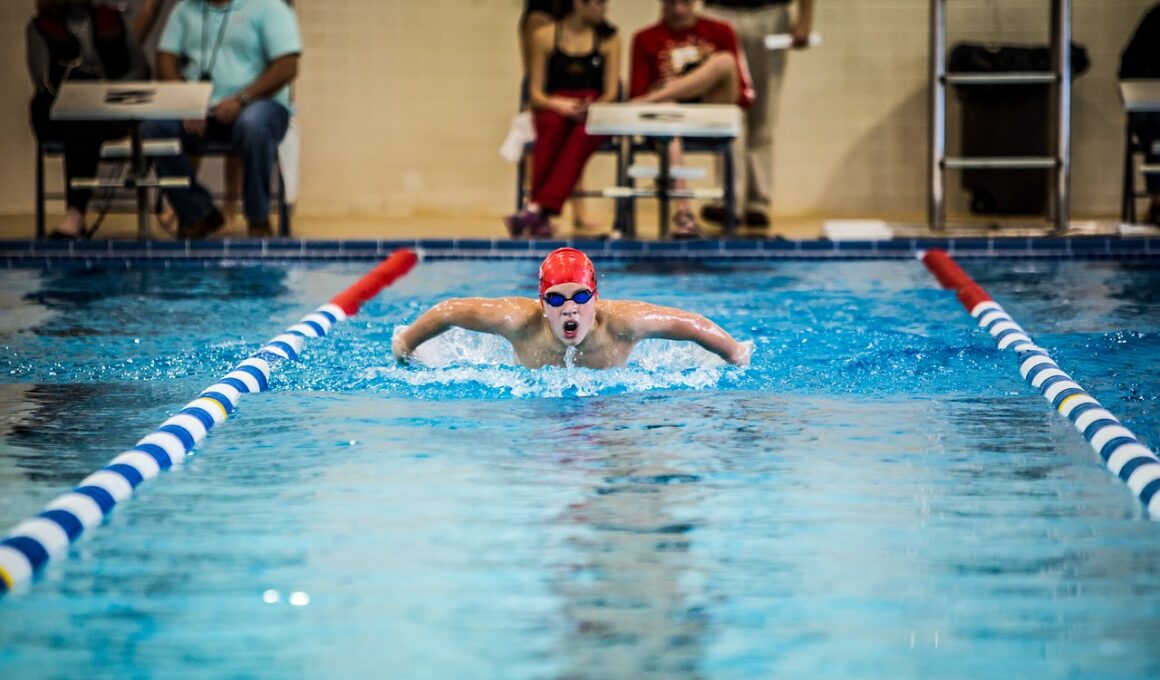Importance of Communication in Swimming Events
Effective communication is critical for swimming event coordinators as it fosters collaboration and enhances overall event success. Clear communication channels can help avoid potential misunderstandings. When coordinators align their teams and volunteers, tasks become streamlined. Frequent updates and reminders help keep everyone on the same page. Coordinators benefit greatly from employing various communication methods, including email, phone, and even social media to inform participants. Using tools such as messaging apps can enable instant communication, crucial for resolving issues that arise on the fly. Building rapport with stakeholders, such as sponsors and local organizations, also depends on effective communication techniques. It is worth investing in a system that ensures timely and reliable exchanges of information. The set expectations should be consistently communicated to all involved parties. Organizing regular meetings to provide updates is a best practice for swimming events. A dedicated platform, like a website or application, can centralize all event-related information, making it easily accessible. By maintaining open lines of communication, coordinators can ensure that their swimming events run smoothly and meet the objectives set forth at the outset of planning.
Communication with Participants
Keeping participants informed is one of the most significant aspects of swimming event planning. Understanding their needs creates a more welcoming environment. This includes providing timely details about registration, event schedules, and any changes that may occur. Coordinators must ensure they employ channels that participants frequently use, such as email or social media. Offering a reliable point of contact helps participants feel comfortable reaching out with any inquiries. Create thorough FAQ sections on official websites to address common questions. Regular newsletters containing vital updates further enhance participant engagement. The tone and clarity of communication should always be professional yet approachable. Inclusivity is also important; making sure that information is accessible to all participants. Featuring multilingual information or graphics can engage diverse populations. This also applies when relaying essential information during the event itself. Live information boards or texting services can keep participants informed in real-time. In any sports event, maintaining transparency fosters trust. Open dialogues about event protocols can reassure participants, allowing them to focus on performing their best in the swimming competition.
Creating a cohesive team of volunteers is fundamental for successful swimming events. Engaging and training volunteers effectively contributes to a smooth event experience. Therefore, assisting volunteers with a clear understanding of roles is essential. Using strategies such as detailed training sessions and accessible resources can maximize preparedness. Coordinators should conduct initial orientation meetings, ensuring volunteers grasp their responsibilities. Scheduled check-in sessions leading up to the event can further clarify tasks and expectations. Effective communication between volunteers fosters awareness of each other’s roles. Encouraging questions and discussions during training can build confidence, which results in better performance. Moreover, appreciating volunteer efforts through recognition can boost morale and productivity. Establishing open communication lines between coordinators and volunteers is crucial for feedback. Utilizing platforms that facilitate quick updates can prevent potential issues from escalating. During the event, briefings before each shift ensure everyone is informed of any last-minute changes. Use visual aids like diagrams and flow charts to illustrate processes. By prioritizing effective communication and training, event coordinators can foster a sense of unity among volunteers, ultimately enhancing the overall execution of swimming events.
Engaging Sponsors Through Communication
Building relationships with sponsors requires strategic communication tactics. Coordinators should engage sponsors from the planning phase of swimming events. Recognizing their contributions through effective communication can ensure sponsors feel valued and invested. Offering detailed sponsorship packages, clearly outlining benefits, can entice potential sponsors. Regular updates can familiarize sponsors with the event’s progress. Coordinators can use personalized email communication to create rapport. Regularly scheduled meetings can help to align marketing strategies, ensuring both parties remain on the same page. Providing sponsorship visibility during the event should also be a priority. Coordinators can share promotional materials and opportunities for brand exposure during the event. This keeps sponsors actively involved and encourages them to participate in future events. Using social media to highlight sponsors enhances their visibility among attendees. By publicly acknowledging their partnership, coordinators build goodwill and strengthen relationships. After the event, coordinators should send thank-you notes alongside a recap of sponsorship results. This demonstrates appreciation and can encourage sponsor retention for upcoming events. Thus, effective communication plays a crucial role in securing long-term partnerships with sponsors.
Leveraging technology can significantly enhance communication strategies for swimming event coordinators. Event management software serves as an invaluable resource for streamlining communication between all parties involved. These platforms provide capabilities for scheduling, task assignments, and real-time updates. Moreover, using mobile applications can foster engagement among participants, allowing them quick access to information. Coordinators can share schedules, maps, and team updates via these tools. Social media also plays a pivotal role in distributing real-time information. Incorporating live streaming or posting updates during the event can keep stakeholders and followers engaged. Furthermore, creating events on platforms like Facebook can boost visibility and awareness. These methods can attract more participants, especially younger athletes who are active online. Email newsletters remain important; utilizing options like Mailchimp can modernize communication. Coordinators can analyze open rates and adapt strategies accordingly. Conducting post-event surveys through technology collects feedback as well. This information helps coordinators better understand the successes and areas for improvement. By integrating technological tools, swimming event coordinators can enhance their communication methods significantly.
Feedback Mechanisms for Continuous Improvement
Establishing feedback mechanisms ensures ongoing improvements for future swimming events. Effective communication encourages participants, volunteers, and sponsors to share their experiences. Post-event feedback collections can provide critical insights into every aspect of the event. Coordinators can use surveys as a structured approach to gathering thoughts and suggestions. Digital platforms make sharing feedback easy and accessible; consider using Google Forms for this purpose. The focus should be on open-ended questions that encourage detailed responses. Consistent communication of the feedback timeline will enhance participation rates. Coordinators must express gratitude toward those who provide feedback, showing that all voices matter. Analyzing feedback trends aids in identifying strengths and weaknesses in the event. Addressing concerns raised through communication demonstrates commitment to improvement. Conducting debrief sessions with staff and volunteers can also provide valuable perspectives. Maintaining a culture of transparency, even when handling criticism, can further enhance team morale. As coordinators reflect on the feedback gathered, applying these insights to future events increases the likelihood of success. Implementing necessary changes shows attendees that their feedback leads to meaningful improvements.
In conclusion, effective communication strategies are paramount for swimming event coordinators. These strategies positively impact stakeholders involved by ensuring clear objectives and streamlined processes. By employing diverse methods of communication, coordinators foster collaboration and engagement. They enable proactive problem-solving and create an inclusive atmosphere at swimming events. Prioritizing timely communication with participants, volunteers, and sponsors is essential for successful planning and execution. Leveraging technology for seamless communication improves overall experiences, drawing more attendees. Establishing feedback mechanisms encourages continual growth and responsiveness to needs. Building strong relationships with stakeholders relies heavily on consistent communication efforts, ensuring coordination succeeds. Implementing these strategies not only cultivates a successful event experience but also supports the broader objectives of the swimming community. Ultimately, fostering a collaborative environment builds the foundation for thriving events and enhances the reputation of the coordinators and clubs involved in the swimming realm.
Effective communication is critical for swimming event coordinators as it fosters collaboration and enhances overall event success. Clear communication channels can help avoid potential misunderstandings. When coordinators align their teams and volunteers, tasks become streamlined. Frequent updates and reminders help keep everyone on the same page. Coordinators benefit greatly from employing various communication methods, including email, phone, and even social media to inform participants. Using tools such as messaging apps can enable instant communication, crucial for resolving issues that arise on the fly. Building rapport with stakeholders, such as sponsors and local organizations, also depends on effective communication techniques. It is worth investing in a system that ensures timely and reliable exchanges of information. The set expectations should be consistently communicated to all involved parties. Organizing regular meetings to provide updates is a best practice for swimming events. A dedicated platform, like a website or application, can centralize all event-related information, making it easily accessible. By maintaining open lines of communication, coordinators can ensure that their swimming events run smoothly and meet the objectives set forth at the outset of planning.


